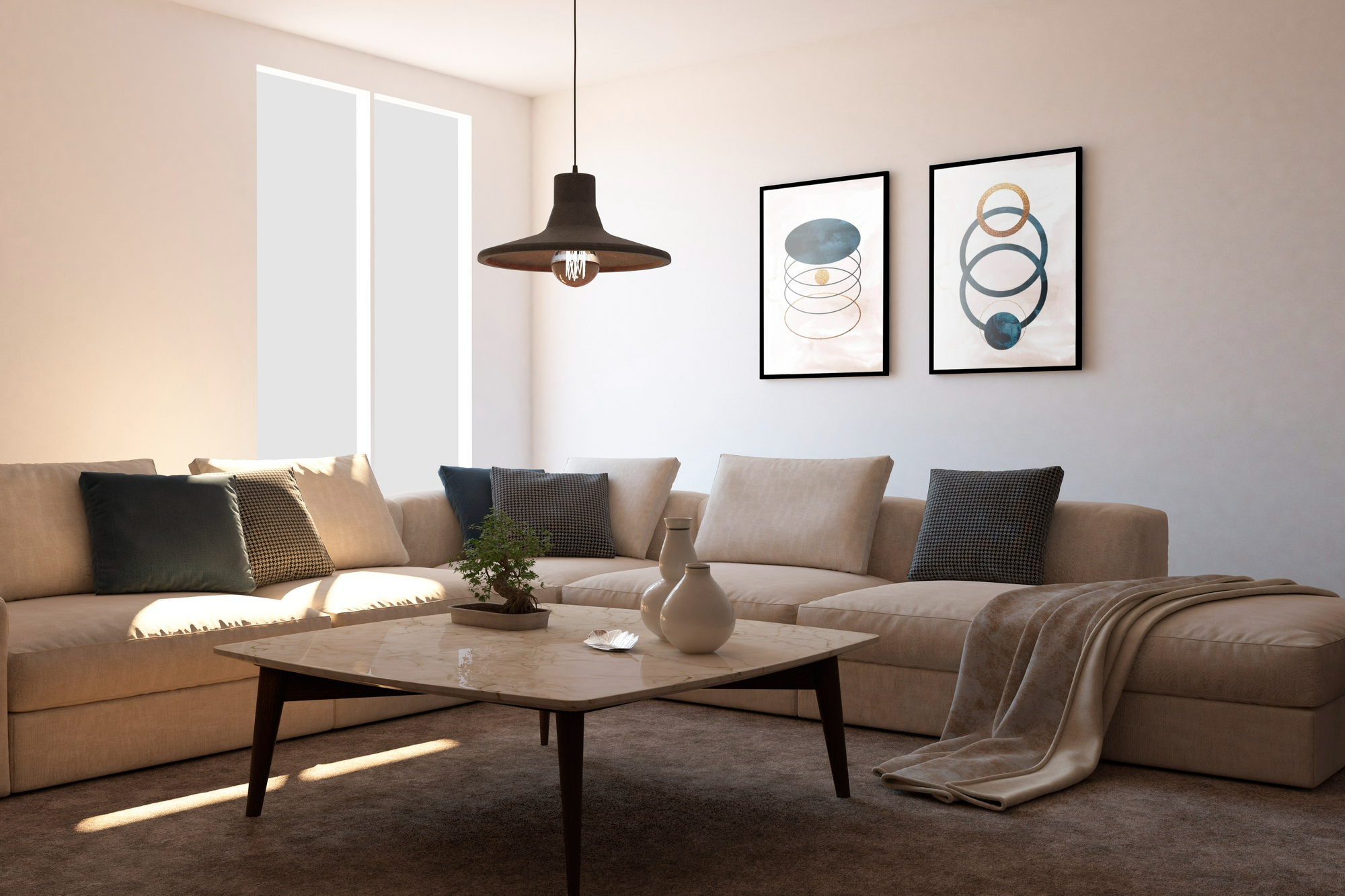When choosing the perfect color scheme for your living room, consider the size of the room and natural light. Opt for lighter hues in smaller spaces and darker tones in larger areas. Reflect your personal style by selecting colors that resonate with you. Achieve balance by coordinating light, medium, and dark tones following the 60-30-10 rule. Enhance the ambiance with colors that evoke the emotions you desire. For a cohesive look, complement the largest pattern, decorate vertically from dark to light, and coordinate with the front door color. Let your living room shine with a color scheme that suits your taste and space.
Consider Room Size and Natural Light
Consider the size and natural light of your living room when selecting a color scheme to guarantee a harmonious and balanced space. The dimensions of your living room play a vital role in determining whether light or dark colors would work best.
In a smaller room, light colors like soft pastels or creamy whites can help create an illusion of openness and airiness. Conversely, in a larger space, dark colors such as navy blue or charcoal gray can add warmth and coziness.
Additionally, the amount of natural light in your living room can impact how colors appear. Choosing hues that complement the light levels will secure a cohesive and visually appealing ambiance that maximizes the potential of your living space.
Reflect Personal Style Through Colors
When selecting a color scheme for your living room, let your personal style shine through by choosing hues that resonate with your emotions, preferences, and individuality.
Colors have the power to convey emotions and reflect your unique identity in interior design. Opt for shades that align with your personal taste to create a space that feels truly authentic.
Balance and Coordinate Color Choices
To achieve a harmonious and cohesive living room color scheme, make sure you incorporate a balanced mix of light, medium, and dark tones.
When balancing and coordinating your color choices, follow these tips:
- Select a dominant hue, a secondary hue, and an accent color to create a cohesive look.
- Utilize the 60-30-10 rule: 60% dominant color, 30% secondary color, and 10% accent color.
- Experiment with different shades of the same color for depth and interest.
- Consider the mood you want to evoke in the space through your color selections.
- Remember to distribute light, medium, and dark tones evenly throughout the room for a well-balanced and visually appealing living room color scheme.
Enhance Room Ambiance With Colors
Enhancing the ambiance of your living room can be achieved through carefully selected color schemes that evoke specific emotions and feelings.
When choosing living room colors, consider a traditional color palette with neutral tones as a base. Neutral tones like beige, grey, or white create a calm and sophisticated atmosphere, allowing you to play with accent colors for a pop of vibrancy.
Incorporating an accent color like navy blue, mustard yellow, or emerald green can add depth and personality to the space.
Tips for Achieving Cohesive Look
For a cohesive look in your living room, make sure that the color scheme complements the largest pattern in the room, such as upholstery or rugs.
To achieve a harmonious and inviting space, consider the following tips:
- Decorate from dark to light vertically: Use darker colors for the floor, medium colors for walls, and light colors for the ceiling.
- Start with formal areas: Establish a color scheme in the living room before moving to private spaces for consistency.
- Consider front door color: Enhance curb appeal by coordinating it with your living room color scheme.
- Incorporate complementary colors: Add depth by using colors opposite each other on the color wheel.
- Utilize artwork: Integrate artwork with colors that tie the room together, creating a cohesive look recommended by interior designers.
Frequently Asked Questions
How to Pick a Color Scheme for a Living Room?
When you pick a color scheme for a living room, think about the mood you want. Consider factors like natural light and furniture style. Balance colors throughout the room for a cohesive look that reflects your style and creates a welcoming atmosphere.
What Is the Best Color Combination for a Living Room?
Consider your desired mood and personal style when choosing a color scheme for your living room. Balance warm-cool tones like brown, blue, and white or opt for bold contrasts with marble-inspired tones. Create a space that reflects you.
What Is the Color Rule for Living Rooms?
Start with the largest pattern in the space. Choose colors from there. Decorate dark to light vertically – dark floor, medium walls, light ceiling. Establish color scheme in formal areas first. Front door color should complement exterior.
How Do I Color Code My Living Room?
To color code your living room effectively, start by selecting a dominant color. Use a color wheel to find complementary shades. Incorporate various tones of your chosen colors for cohesion. Remember the 60-30-10 rule for balance.
Conclusion
To sum up, selecting the perfect color scheme for your living room involves taking into account the room's size, natural light, and your personal style.
By harmonizing and coordinating colors effectively, you can establish a balanced and inviting atmosphere that mirrors your individual taste.
Make sure to choose colors that seamlessly flow throughout the area to achieve a unified look that enhances the overall feel of your living space.
Keeping these suggestions in mind, you can design a space that resonates with both you and your visitors.




